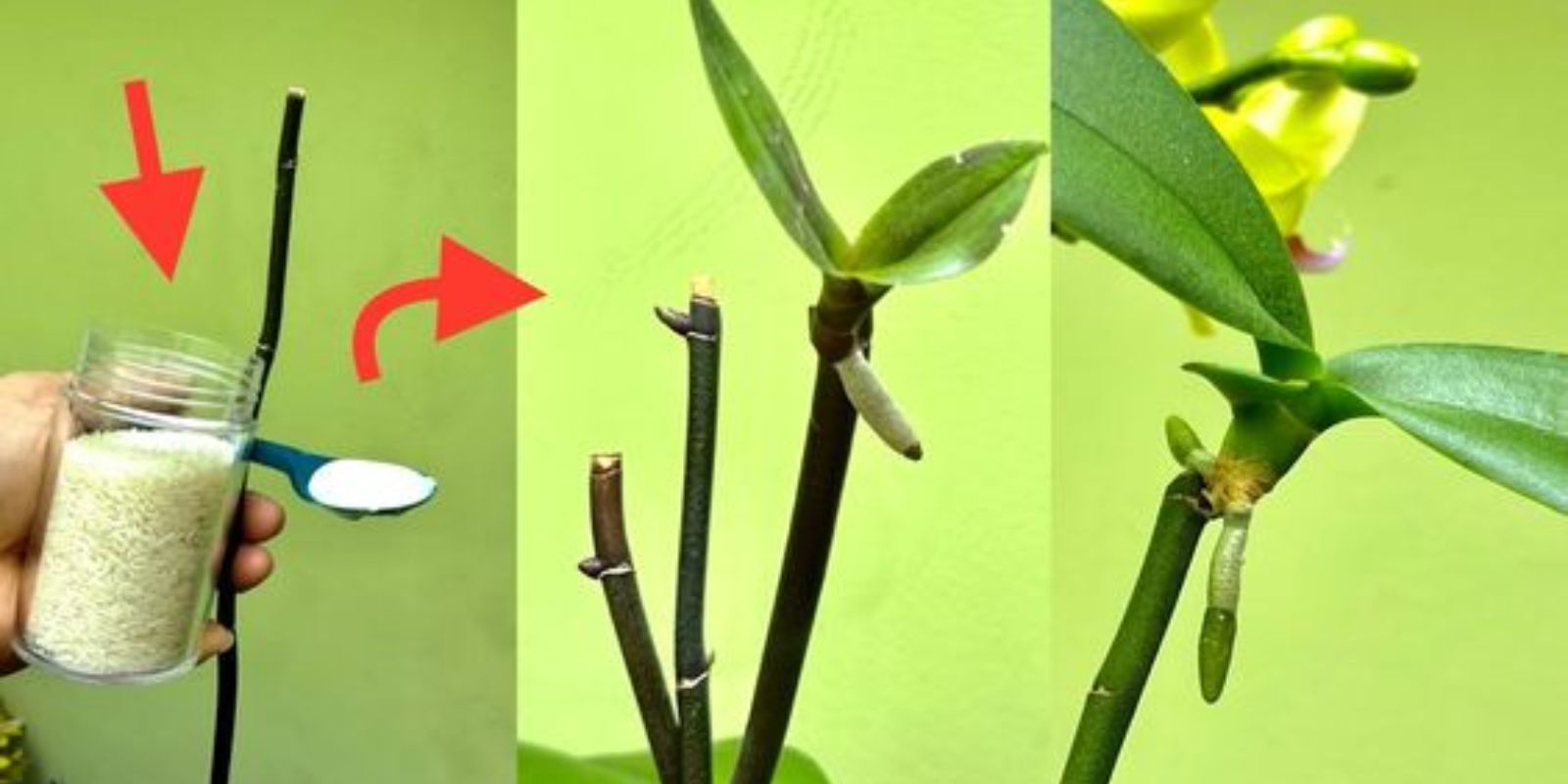Orchids are renowned for their exotic beauty and delicate flowers, but they are also known for being quite temperamental. Many orchid enthusiasts face the challenge of dealing with wilting branches and buds that just won’t bloom. If you’ve ever felt frustrated with your orchid’s refusal to flourish, you’re not alone. Fortunately, there’s a simple and effective method to rejuvenate a wilted orchid branch and encourage it to burst into a stunning display of flowers.
Understanding Orchid Care
Before diving into the specific steps to revive your orchid, it’s important to understand the basic needs of these plants. Orchids require a balance of light, water, humidity, and nutrients to thrive. They prefer indirect sunlight, as direct sun can scorch their leaves. Additionally, orchids need to be watered carefully; too much water can lead to root rot, while too little can cause dehydration. Humidity levels should be kept moderate, mimicking the orchid’s natural tropical environment.
Common Causes of Wilting
Several factors can contribute to a wilted orchid branch. These include improper watering, insufficient light, low humidity, and nutrient deficiencies. Stress from repotting or environmental changes can also cause wilting. Identifying the root cause is essential to prevent future issues, but for now, let’s focus on a simple method to revive your struggling orchid.
The Simple Trick to Revive Your Orchid
Here’s a step-by-step guide to using a sugar and apple cider vinegar solution to bring your orchid back to life:
Step 1: Prepare the Solution
Start by mixing one teaspoon of sugar and one teaspoon of apple cider vinegar in a cup of lukewarm water. The sugar provides a quick energy boost for the plant, while the vinegar helps to balance the pH and has antifungal properties that can prevent infections.
Step 2: Trim the Wilted Branch
Using sterilized scissors or pruning shears, carefully trim the wilted branch of the orchid just above the node where you want new buds to form. This encourages the plant to focus its energy on the healthy parts and promote new growth.
Step 3: Soak the Branch
Dip the cut end of the branch into the prepared solution for a few minutes. This allows the branch to absorb the beneficial nutrients and moisture directly.
Step 4: Apply the Solution
Take a clean cloth or cotton ball and gently dab the solution onto the cut end of the branch. Ensure the entire cut surface is covered, which helps to seal the cut and provide ongoing nourishment.
Step 5: Replant the Orchid
Place the orchid back in its pot, ensuring it has good drainage and fresh orchid mix. Orchids do not like to sit in waterlogged soil, so make sure the potting medium allows excess water to drain away.
Step 6: Provide Proper Care
Position the orchid in a spot with indirect sunlight, such as near a north or east-facing window. Maintain proper humidity levels by misting the plant regularly or using a humidity tray. Water the orchid as needed, allowing the potting mix to dry slightly between waterings.
Detailed Orchid Care Tips
To ensure your orchid continues to thrive after revival, follow these detailed care tips:
Light
Orchids thrive in bright, indirect light. Direct sunlight can scorch their leaves, so it’s best to place them near a window with filtered light or use sheer curtains to diffuse the sunlight. An east-facing window is ideal, providing morning light that is gentle and beneficial.
Watering
Proper watering is crucial for orchids. They should be watered thoroughly but allowed to dry out slightly between waterings. Overwatering can lead to root rot, while underwatering can cause dehydration. The best method is to water the orchid until water runs out of the drainage holes, then wait until the top inch of the potting mix feels dry before watering again.
Humidity
Orchids love humidity, ideally between 40-60%. If you live in a dry climate, consider using a humidity tray or a humidifier to maintain adequate moisture levels. Misting the plant regularly can also help, but avoid misting the flowers as it can cause spots and reduce their longevity.
Fertilizing
Use a balanced orchid fertilizer to feed your plant every two to four weeks during the growing season (spring and summer). Reduce feeding during the fall and winter months when the plant’s growth slows down. Always follow the instructions on the fertilizer package to avoid overfeeding.
Benefits of the Sugar and Vinegar Solution
The sugar in the solution provides an immediate energy boost for the plant, helping it to recover from stress. Apple cider vinegar, on the other hand, helps to balance the pH levels of the soil and provides antifungal properties, reducing the risk of infections. Together, these ingredients create an environment conducive to growth and blooming.
Motivating Your Gardening Journey
Gardening is a journey filled with learning experiences and rewarding moments. Trying out new methods, like this simple trick to revive orchids, can be incredibly satisfying. Watching a wilted orchid branch come back to life and bloom beautifully is a testament to your care and dedication.
Conclusion
Reviving a wilted orchid branch doesn’t have to be a daunting task. With a simple sugar and apple cider vinegar solution, you can breathe new life into your plant and enjoy its stunning blooms. Remember, proper care and attention are key to maintaining healthy orchids. Embrace the journey, experiment with new techniques, and enjoy the beauty and tranquility that orchids bring to your home.
Start experimenting with this method today and be amazed at how easily you can bring your orchids back to life! Your plants will thank you for the extra care and attention, rewarding you with vibrant, beautiful blooms that brighten up any space. 🌸✨

